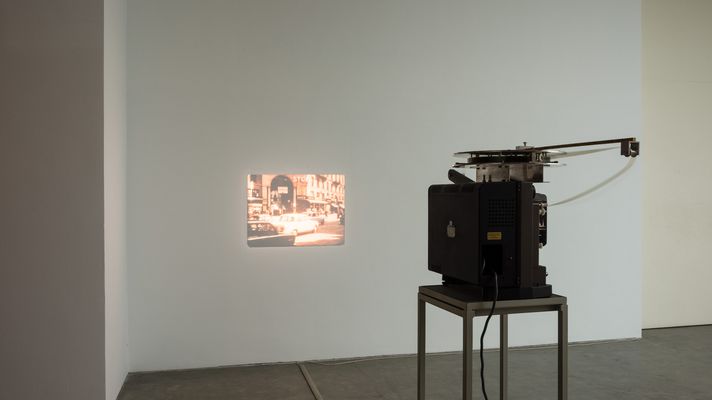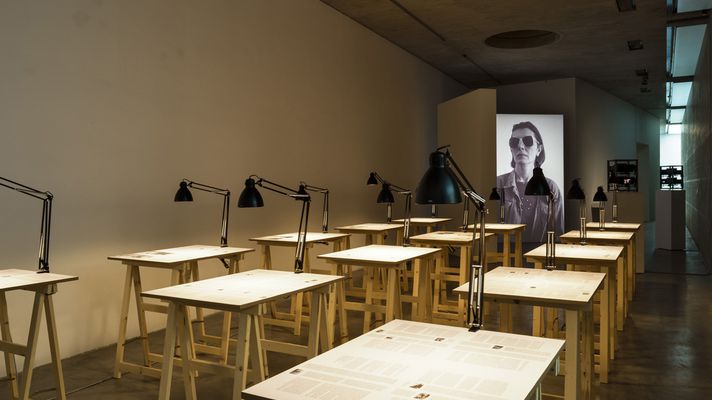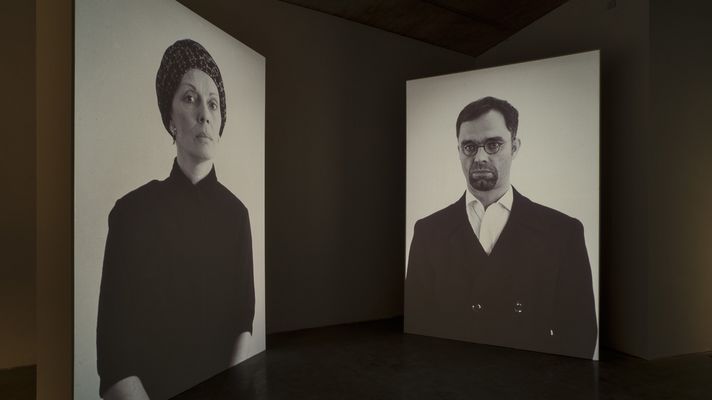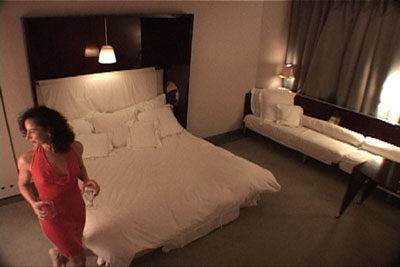INHALE is a cultural platform where artists are presented, where great projects are given credit and readers find inspiration. Think about Inhale as if it were a map: we can help you discover which are the must-see events all over the world, what is happening now in the artistic and cultural world as well as guide you through the latest designers’ products. Inhale interconnects domains that you are interested in, so that you will know all the events, places, galleries, studios that are a must-see. We have a 360 degree overview on art and culture and a passion to share.

With the occasion of its twenty five years celebration, Generali Foundation has hosted three curatorial projects: 1. Amazing! Clever! Linguistic! An Adventure in Conceptual Art, curated by Guillaume Désanges 17. Januar – 21 April 2013; 2. The Content of Form, represented by Helmut Draxler, 17. Mai – 25. August 2013; Against Method, seen by Gertrud Sandqvist, 13. September – 22. Dezember, 2013.
The exhibitions include three different approaches on conceptual art and the way it has been exhibited and curated during the Foundation’s 25 years of existence. Against Method is temporally, the last of the three exhibitions, curated by Gertrud Sandqvist.
The title comes from Paul Karl Feyerabend’s acclaimed book Against Method: Outline of an Anarchistic Theory of Knowledge (1975), where the author claims that science would make good use of theoretical anarchy. Critique is brought to methodological monism and to the assumed strictness of scientific methods. The curatorial concept is linked to the ironical phrase used by Feyerabend in the end of the book: “anything goes”. Anything goes – in the sense that Sol Lewitt also explained in his Sentences on Conceptual Art: “Conceptual artists are mystics rather than rationalists. They leap to conclusions that logic cannot reach.”[1] The exhibition is a joyful presentation of pieces dating from the seventies, a period in which video art gained great popularity between artists, becoming for some the necessary tool of expression: video art – regarded as the most appropriate medium to express immateriality, video art – used as a medium of communication not as an artistic object in itself.
The exhibition is structured with the help of concepts like The Retinal, Identity/Body, Gesture, and Transgression. The highlight is on conceptual art from the late sixties and seventies and the different media one had used in order to make new ideas visible.
Lamelas’s Gente di Milano (1970) was probably one of the pioneering works that introduced the idea of a surveillance camera. The piece implies a camera fixed in a street corner in Milano. Through the mechanical gaze, the author is gaining spatial property. The view is singular, and attested by snapshots of the people passing by. The final piece includes the film installation reproducing the filmed images from the seventies, and eleven black-and-white printed photographs indicating the exact time when the picture was taken. A piece that questions the art object as being central to the viewer’s interest and transgresses the interest onto the process of looking. Is the act of looking a way of changing reality? Lamelas’s piece is a good reminder of this question.

Exhibition view: Against Method, Generali Foundation, 2013. Photo: Margherita Spiluttin
foundation.generali.at
Elective Affinities/The Truth of Masks and Tables of Affinities is a great example of using art as a method of interpretation and analyses and reflexion of past events. I loved this piece for its capacity to express the reflexive characteristic of conceptual art, not only its quest for originality. One of the claims of the emerging conceptual artists, in the seventies, was the commercialization and objectification of art. This doesn’t mean that conceptual art an immaterial art is, but rather that conceptual art uses expression as a reflection, as a proof of a process of thought, without aiming to produce an aesthetic experience. Torf’s installation includes 14 tables with a lamp, comprising the information of a book in making – probably Walter Benjamin’s never finished book, on which he worked more than seventeen years and never completed. Secondly, the installation comprises a series of photography that have in the center a person reading a book. We can’t see the face of the reader, only the covers of the book he/she is reading: Goethe’s Elective Affinities (1809); Oscar Wilde’s The Truth of Masks (1891), Benjamin’s German Men and Women: A Sequence of Letters (1936); Arendt’s Men in Dark Times. The third component of the installation consists in slide projections on two free standing projection walls. The projection is a loop of pictures of a man and a woman standing alone, each on a wall. Every change of picture shows the same couple dressed differently.

Exhibition view: Against Method, Generali Foundation, 2013. Photo: Margherita Spiluttin
foundation.generali.at
The objective of this action: to re-enact Goethe’s concept of elective affinities and demasque marriage as a failure scenario consisting in role-play and routine. Torf’s installation is the incorporation of thought that emerges when a critical theorist uses a classical text in order to discuss the status of marriage in contemporary society. Torf not only shows this process of revisiting culture but she makes a further step by transgressing from reflection to action. The projection of the couple is Torf’s own interpretation of the elective affinities. The final objective is the visualization of a process of thought plus the application of the observed. What Torf does is to create a relation of interchangeability between object and viewer. The dynamic of the piece happens in the relation between the viewer-viewed: the artist – as reader of past processes, the readable object- a document of the process, the process of viewing – objectified, the viewer himself is not only a reader but also a potential creator, a visionary and promoter of the idea.

Exhibition view: Against Method, Generali Foundation, 2013. Photo: Margherita Spiluttin
foundation.generali.at
The same aspect of looking and being looked at is trapped in the works of Lamelas with Gente di Milano, and in Zobering’s work Video nr. 5(1991). Zobering’s video is a loop showing the artist on his knee, with a rifle in his hand, leaning towards a window, ready to shoot. We can hear the sound of the rifle releasing the safety catch and the pop of champagne corks. Zobering’s short film is a visual demonstration of Benjamin’s comparison between a photographer and a hunter (see Short History of Photography 1931).Dan Graham’s Body Press (1970-1972) is a film projected on two opposite walls, showing the a man and a woman while filming each other. As mentioned in the presentation paper, the piece is a study of identity. Identity is defined not only through the camera’s eye, which is a tool in the viewer’s hand, but it is also a question of trust between the two holders of the camera. At some point they also change the cameras, the viewing perspectives are changed. As a spectator you are trapped between the two walls with the projections of the two subjects who film and are being filmed simultaneously. On the right wall you see the woman filming. On the left wall you see the man filming. Graham superposes the camera’s filming perspective with the looking perspective of the viewer. The camera is integrated into the relation viewer-viewed, and becomes not only a documentation tool but the subject of the view. The dramaturgy of the installation relies on the camera’s subject. The viewer’s reading experience is perfomative in the sense of actually having to choose on which wall to look. It doesn’t matter where you take it from, the experience is a mirroring game.
Check out this 1994 interview with the artist in Bombmagazine: http://bombsite.com/issues/46/articles/1722
More about Dan Graham’s work at: http://artpulsemagazine.com/words-mirrors-dan-graham-beyond
Other artists like Mary Kelly, Hans Haacke are present in the exhibition with works that offer a conceptual reflection upon biological and organic processes. Lili Dujourie uses the camera as a tool of empowering the viewed subject. Her series Hommage a…are all essays of deconstructing the relation of power- and subordination that usually gets installed between a viewer and the viewer. Marta’s Rosler video Semitotics of the Kitchen, 1975, is a great delight. Here is a performer with a intelligent sense of humour, a piece that speaks about the objectification of women, a critique of a society of spectacle, where reality is being shaped by media. Rosler’s piece shows the artist in a kitchen, explaining the use of kitchen tools, in a mechanical and performative way. The piece is also a critique of culinary TV shows.
The exhibition includes also pieces from 21th century, like Andrea Fraser’s piece Untitled, 2003, a video recording of the artist and a collector in a hotel room, naked, in a bed. The concept is one of destabilization of the relationship between artist and collector, which is often seen as a prostitute and client relation. The artist spent one night with a collector, who bought the first videotapes out of five. The power relationship between artist and collector been redefined when the artists sold the tape nr.2 to the museum of Generali Foundation. In the process of doing and selling art, the artist regains her rights as she is the producer, the seller, and the sold.
[1] http://www.altx.com/vizarts/conceptual.html
by Alexandra Pazgu
Alexandra Pâzgu is an artistic researcher and practitioner, interested in contemporary dramaturgical dynamics. Currently enrolled in an artistic based Ph.D. at UBB Cluj, with a proposal that links dramaturgy to conceptual art.


























































